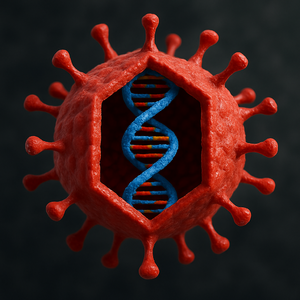Logophage

The Logophage Virus, CNS-LX-1, (generally referred to simply as logophage) is unleashed on humanity in early April 2150(?) when Darius uploads a 3D scan of the Elton Tablet to the global network. The first recorded infection of logophage occurred in the Province of Warsaw on April __, 2150, leading to it often being referred to as the Warsaw Virus.
The progressive effects of logophage are referred to as Erasure Syndrome. Logophage is a manufactured virus, something humanity has never seen, something of a hybrid between a computer virus and a biological virus. The virus ultimately robs the individual of the capacity for language—obliterating both expression and comprehension.
Erasure Syndrome includes four progressive effects, but there is no clear indication of the pacing of these stages:
- Phase 1: Pure alexia. The individual loses the ability to read while retaining the ability to write, speak, and understand language.
- Phase 2: Symbol agnosia. The individual loses the ability to recognize visual symbols, numbers, even familiar signs and logos.
- Phase 3: Symbolic thinking breaks down. The individual loses the ability to understand metaphors, abstract concepts.
- Phase 4: The individual suffers gradual semantic breakdown as the visual-meaning connection deteriorates.
Logophage only effects people with a particular learned neural architecture, one formed during a childhood (ages 0 to 7) in which the native language is a derivative of Proto-Indo-European. The virus attacks the ventral occipitotemporal cortex (vOTC), which is crucial for symbolic processing, but focuses in particular on the visual word form area (VWFA), which is critical for connecting visual symbols to meaning. More specifically, the VWFA controls visual-orthographic processing, the individual's ability to recognize written symbols and connect them to phonological and semantic representations.